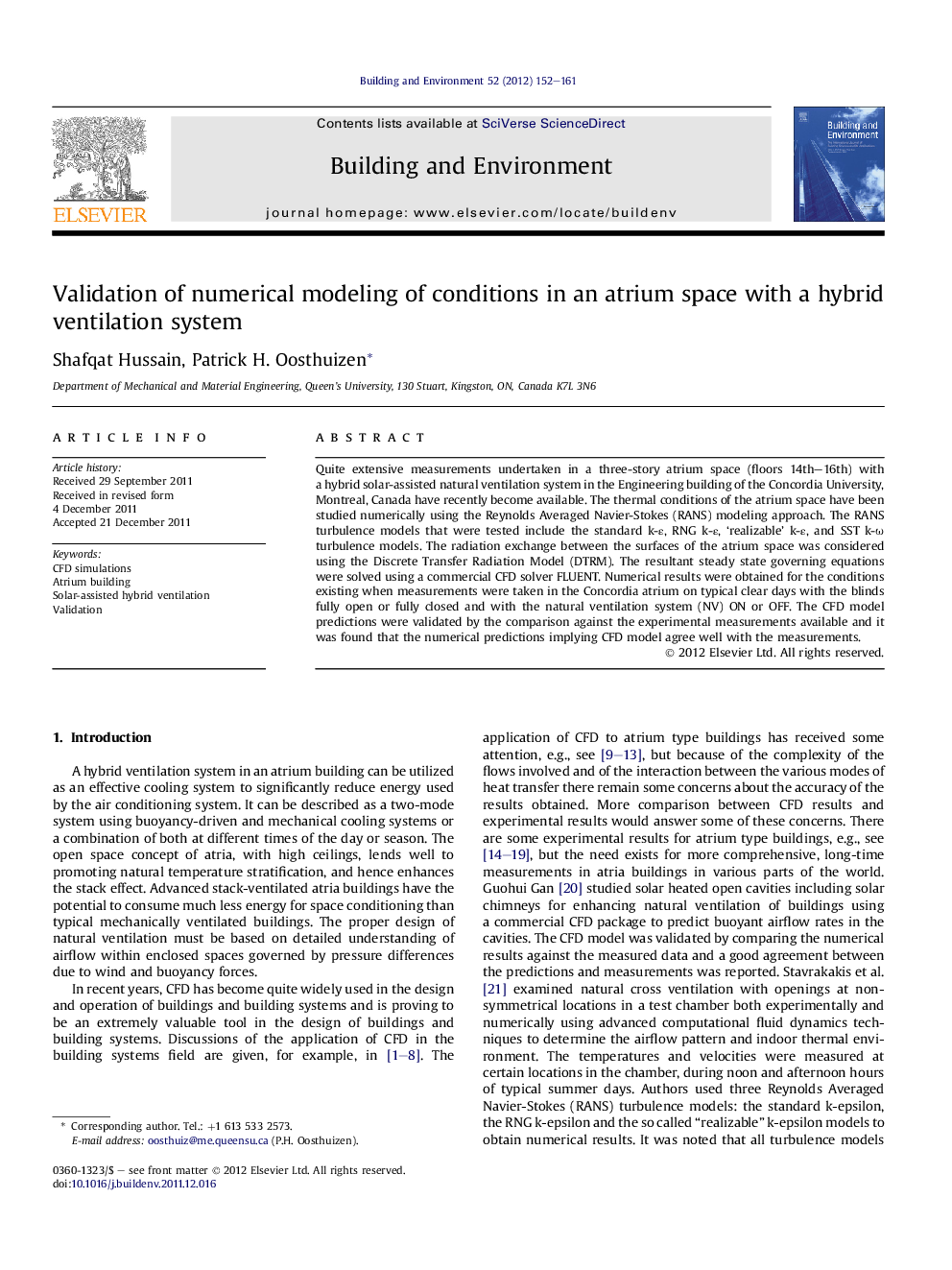| Article ID | Journal | Published Year | Pages | File Type |
|---|---|---|---|---|
| 6701685 | Building and Environment | 2012 | 10 Pages |
Abstract
Quite extensive measurements undertaken in a three-story atrium space (floors 14th-16th) with a hybrid solar-assisted natural ventilation system in the Engineering building of the Concordia University, Montreal, Canada have recently become available. The thermal conditions of the atrium space have been studied numerically using the Reynolds Averaged Navier-Stokes (RANS) modeling approach. The RANS turbulence models that were tested include the standard k-ε, RNG k-ε, 'realizable' k-ε, and SST k-Ï turbulence models. The radiation exchange between the surfaces of the atrium space was considered using the Discrete Transfer Radiation Model (DTRM). The resultant steady state governing equations were solved using a commercial CFD solver FLUENT. Numerical results were obtained for the conditions existing when measurements were taken in the Concordia atrium on typical clear days with the blinds fully open or fully closed and with the natural ventilation system (NV) ON or OFF. The CFD model predictions were validated by the comparison against the experimental measurements available and it was found that the numerical predictions implying CFD model agree well with the measurements.
Related Topics
Physical Sciences and Engineering
Energy
Renewable Energy, Sustainability and the Environment
Authors
Shafqat Hussain, Patrick H. Oosthuizen,
